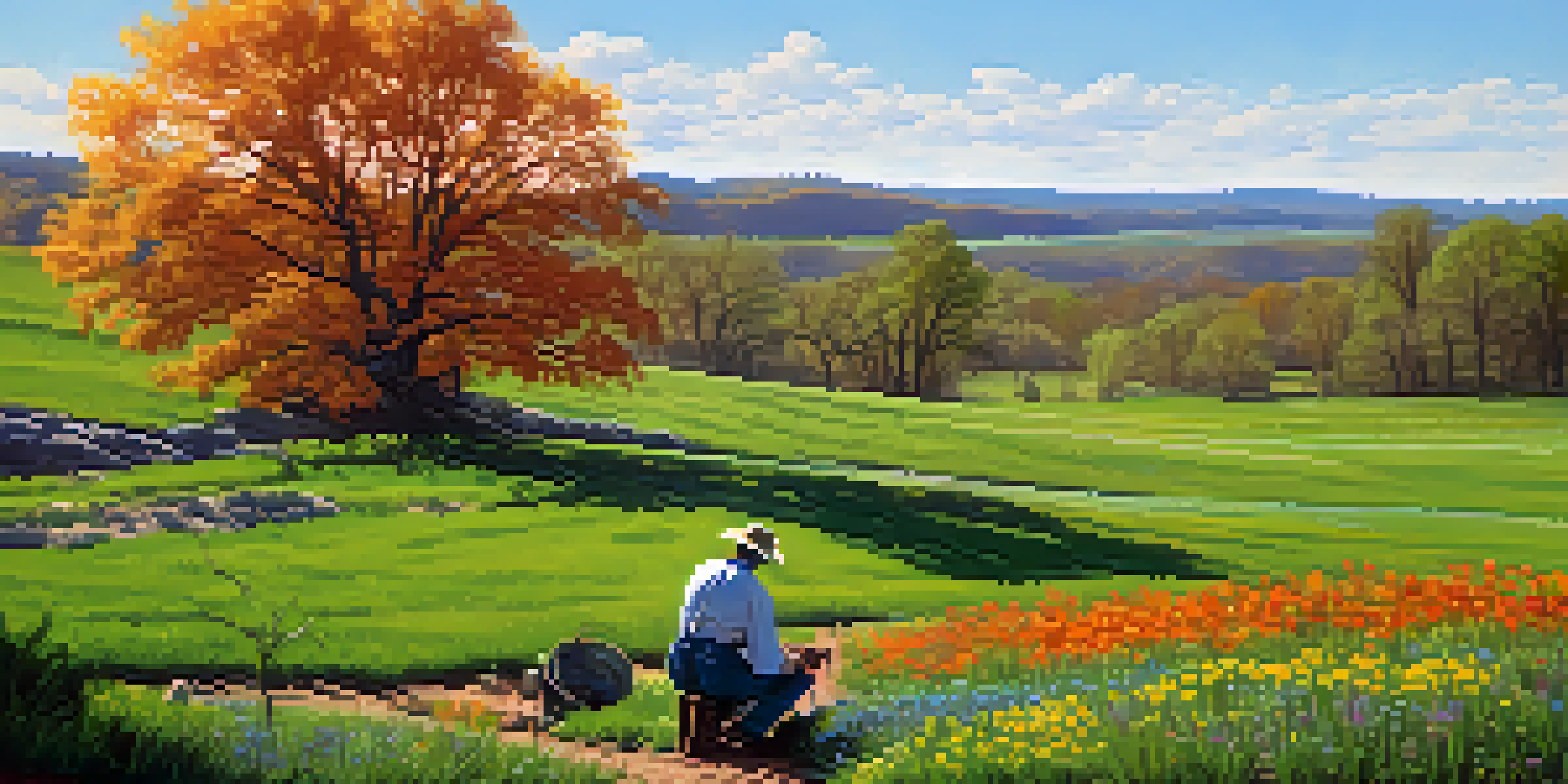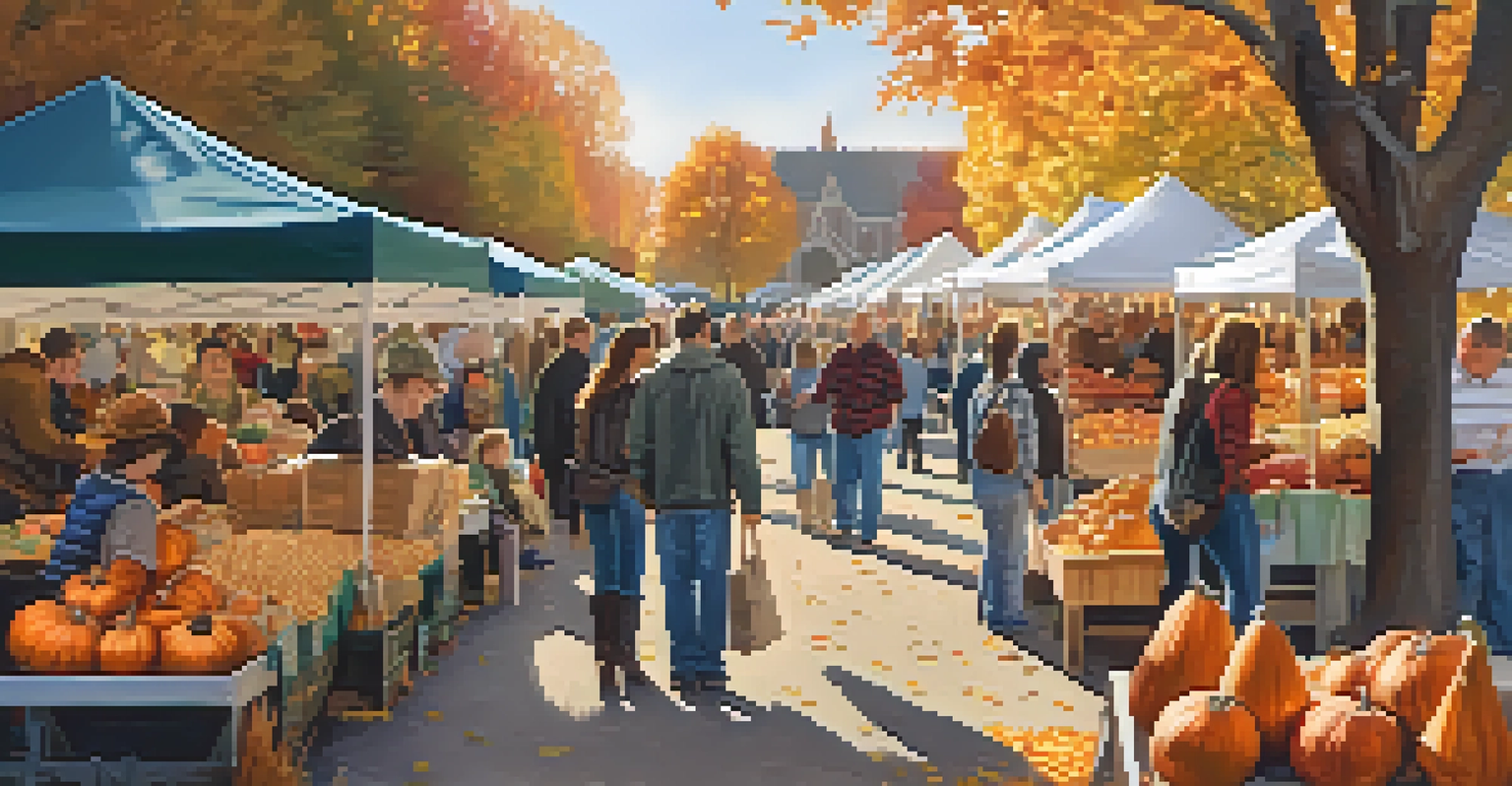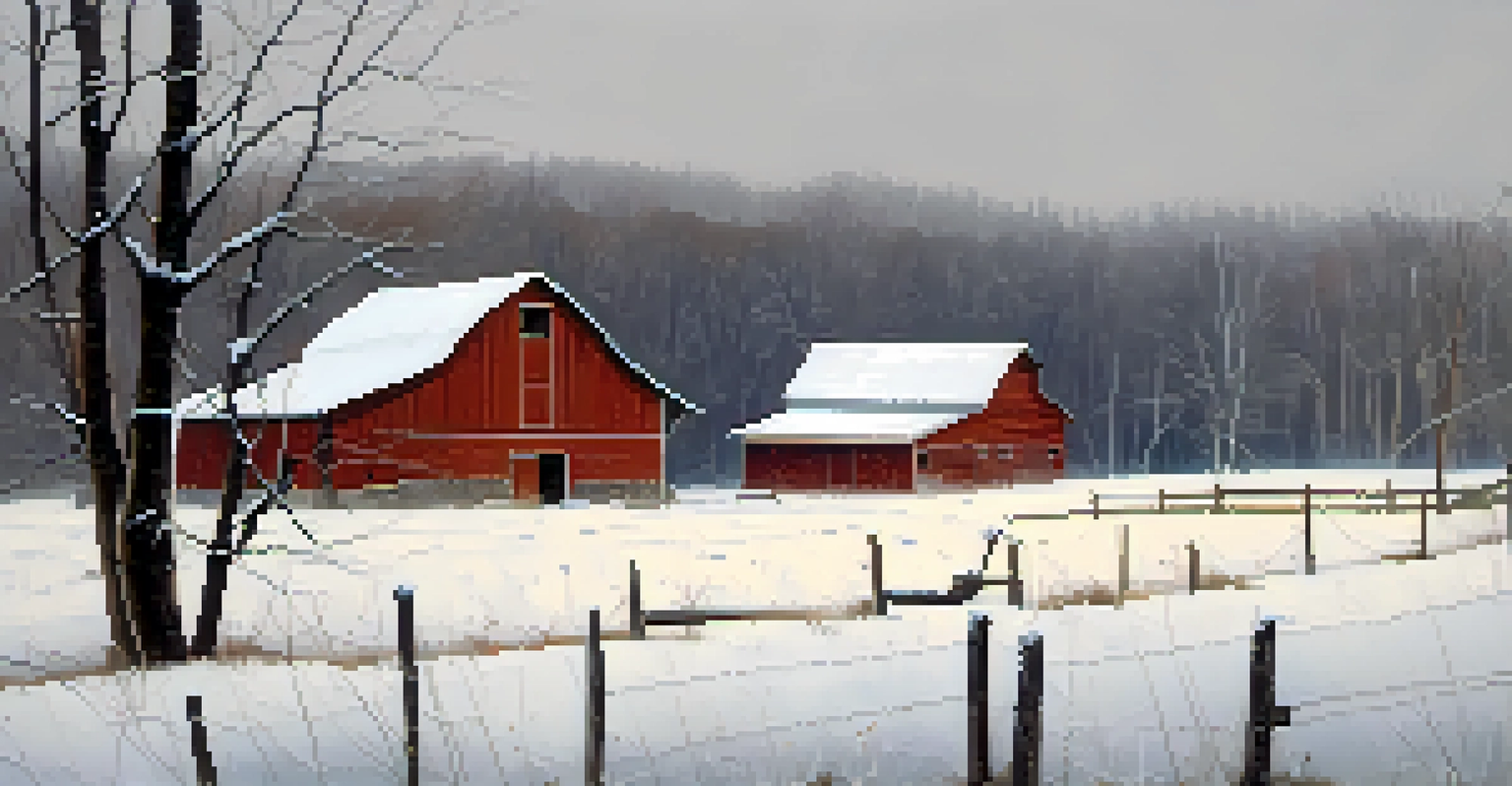Seasonal Changes in Missouri: Effects on Agriculture and Tourism

Understanding Missouri's Diverse Seasons
Missouri experiences four distinct seasons, each bringing unique weather patterns and environmental changes. From the vibrant blooms of spring to the snowy landscapes of winter, these seasonal shifts play a crucial role in shaping the state's agricultural practices and tourism opportunities. Understanding these variations is essential for farmers and business owners alike, as they adapt to the rhythm of nature.
The seasons are what a symphony ought to be: four perfect movements in harmony with each other.
Spring heralds warmer temperatures and rainfall, promoting growth in crops like corn and soybeans. Farmers eagerly prepare their fields, planting seeds that will flourish in the fertile Missouri soil. Meanwhile, tourism begins to pick up as visitors flock to local parks and gardens, eager to witness the beauty of blooming wildflowers and budding trees.
As summer arrives, the warm weather leads to peak agricultural productivity, with fields bursting with life. However, this season also brings challenges, such as heat waves and droughts that can impact crop yields. Tourists take advantage of the long days by exploring outdoor activities, from hiking in the Ozarks to enjoying county fairs.
The Role of Fall in Agriculture
Fall is a transformative season in Missouri, marked by cooler temperatures and stunning foliage. For farmers, this is a critical time for harvesting crops such as apples, pumpkins, and corn. The vibrant colors of autumn not only signify the end of the growing season but also present an opportunity for agritourism, as visitors seek out pumpkin patches and apple orchards.

Moreover, the fall harvest season often brings communities together for festivals and events celebrating local produce. Farmers’ markets become a hub of activity, showcasing the fruits of labor and providing a chance for locals and tourists to connect. This sense of community enhances the appeal of fall tourism, drawing people to experience Missouri's agricultural bounty firsthand.
Missouri's Seasons Shape Agriculture
Understanding Missouri's distinct seasons is crucial for farmers and businesses as they adapt to the changing weather patterns that influence crop cycles and tourism.
As the days grow shorter and temperatures drop, preparations for winter begin, but the allure of fall remains strong. The combination of harvest activities and scenic beauty makes this season a favorite for many, providing a rich tapestry of experiences that highlight the connection between agriculture and tourism.
Winter: Challenges and Opportunities in Agriculture
Winter in Missouri can be harsh, with snow and freezing temperatures posing challenges for farmers. Many crops lie dormant, and farmers must rely on their planning and resource management to weather the cold months. However, winter also offers opportunities for those involved in livestock farming, as animals are often raised in more controlled environments.
Agriculture is the most healthful, most useful, and most noble employment of man.
The winter season is also a time for farmers to regroup and prepare for the coming year. This downtime allows them to assess their successes and challenges from the previous year, making necessary adjustments to improve productivity. Additionally, winter sports and activities, like snowmobiling and skiing, attract tourists to the state, giving local businesses a much-needed boost.
While agriculture takes a backseat during the cold months, the spirit of community remains strong through winter festivals and holiday markets. These events not only celebrate local products but also foster a sense of belonging and warmth, reminding everyone that even in the cold, Missouri's charm shines through.
Spring: A Fresh Start for Farmers and Tourists
As winter fades, spring brings a renewed sense of hope and activity to Missouri's agriculture. Farmers begin their planting season, and the sights and sounds of new growth fill the air. This is a time of optimism, as crops such as tomatoes, peppers, and strawberries are sown, setting the stage for a fruitful harvest.
Spring also marks the return of tourists eager to explore Missouri's natural beauty. Local festivals celebrating the arrival of spring, like flower shows and food fairs, draw visitors from all over. Outdoor activities, such as hiking and biking, become increasingly popular as the weather warms up, showcasing the state's scenic landscapes.
Climate Change Disrupts Seasons
Climate change is altering traditional seasonal patterns in Missouri, impacting planting schedules and tourism activities while necessitating collaboration among stakeholders.
The synergy between agriculture and tourism is particularly evident during spring. Farmers benefit from increased sales at local markets, while tourists enjoy the fresh produce and vibrant culture, creating a win-win scenario for both sectors. This interconnectedness highlights the importance of seasonal changes in shaping Missouri's economy.
Impact of Climate Change on Seasonal Patterns
Climate change is increasingly affecting seasonal changes in Missouri, leading to unpredictable weather patterns. Farmers are noticing shifts in planting and harvesting times, which can disrupt traditional agricultural schedules. For example, warmer winters may result in earlier springs, but they can also bring about frost threats that jeopardize fragile new crops.
Tourism is also impacted, as unpredictable weather can deter visitors. A hot summer might lead to fewer outdoor events, while an unusually mild winter can change the appeal of winter activities. This unpredictability challenges businesses to adapt quickly and find new ways to attract tourists throughout the year.
Addressing these issues requires collaboration between farmers, tourism boards, and local governments. By sharing knowledge and resources, stakeholders can develop strategies to mitigate the effects of climate change, ensuring that both agriculture and tourism continue to thrive in Missouri.
The Economic Impact of Seasonal Tourism
Seasonal tourism plays a crucial role in Missouri's economy, contributing significantly to local businesses and employment. Each season brings its unique attractions, from summer festivals to fall harvest events, drawing visitors to the state. This influx of tourists stimulates spending in various sectors, including hospitality, retail, and agriculture.
Moreover, seasonal tourism encourages the development of new attractions and experiences, enriching the offerings available to visitors. For example, wineries and breweries often host seasonal events that highlight local produce, helping to create a thriving agritourism industry. This not only boosts local economies but also fosters a sense of pride in Missouri's rich agricultural heritage.
Seasonal Tourism Boosts Economy
Seasonal tourism significantly contributes to Missouri's economy by attracting visitors year-round, which stimulates local businesses and promotes agritourism.
As communities recognize the importance of seasonal tourism, efforts to promote local events and attractions become essential. Collaborations between local businesses, event organizers, and tourism boards can help craft compelling marketing campaigns that showcase the best Missouri has to offer throughout the year.
The Future of Agriculture and Tourism in Missouri
Looking ahead, the future of agriculture and tourism in Missouri relies heavily on adapting to seasonal changes and climate challenges. Embracing sustainable practices in farming can help mitigate some of the impacts of climate change, ensuring that agriculture remains viable. By prioritizing environmentally friendly methods, farmers can enhance productivity while preserving the land for future generations.
Simultaneously, the tourism sector must evolve to meet changing visitor preferences. This means investing in diverse experiences that celebrate Missouri's natural beauty and agricultural heritage. By highlighting local culture and sustainable practices, tourism can attract eco-conscious travelers seeking authentic experiences.

Ultimately, the synergy between agriculture and tourism is vital for Missouri's economy. By working together to address seasonal changes, both industries can thrive, creating a resilient and vibrant future for the state. As Missouri continues to adapt, the beauty of its seasons will remain a cornerstone of its identity.